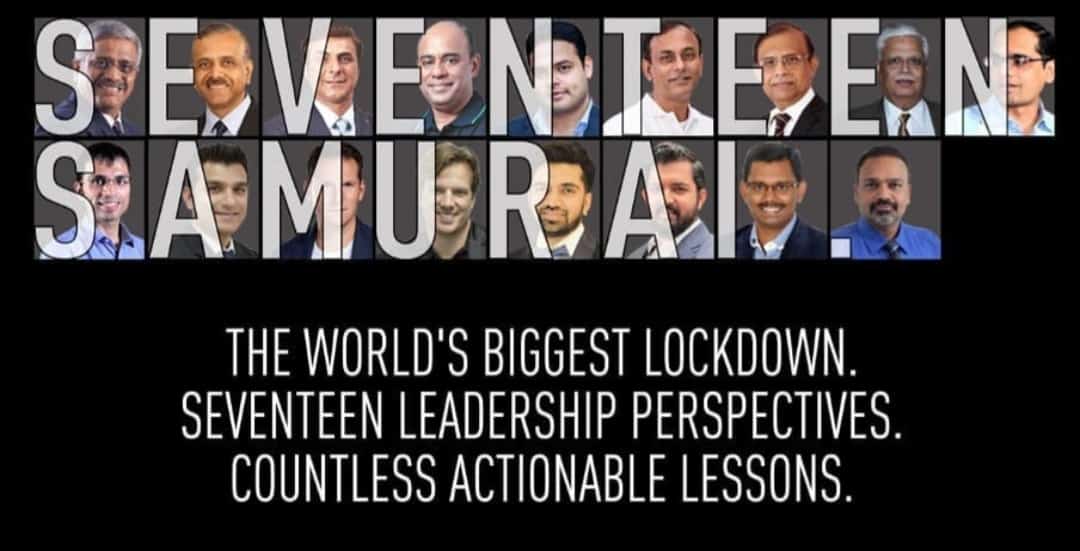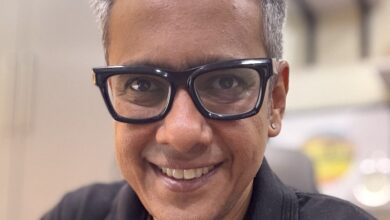Get The Wheels Rolling

We need to incubate and develop local manufacturers.
Interview Date: May 16, 2020
Where were we: India’s Coronavirus caseload had crossed 85,000. Essential services like online stores and grocery shops had opened after more than two months of a near-total lockdown. There was a moment of relief after more than two months of near-total lockdown. The term ‘atmanirbhar’ was trending on twitter after PM Modi spoke about it on television. There was an atmosphere of cautious optimism when we did this interview with Punit Gupta, MD, Blaser Swisslube India, Dr. Vishwas R Puttige, Business Head, Amace Solution Pvt Ltd and Maulik Patel, Executive Director, SLTL Group. Edited excerpts.
Key Takeaways
Dr. Vishwas R Puttige
- 3D Printing shrinks the whole manufacturing lead time. Prototyping a part through die-casting could take five to six weeks, whereas with 3DP it takes only about 2-3 days.
- The medical devices sector is also using 3DP; there are a lot of 3D-printed medical implants today which are even tailor-made for specific patients.
- A local manufacturer doesn’t necessarily have to be an India-origin company, but one which is contributing to India’s growth.
- We need to incubate and develop local manufacturers.
- Most manufacturers are going to be left with huge surplus capacity as the lockdown ends, based on some factors. For example, the automotive industry is heavily dependent on how people will start looking at investing in automobiles this year.
Punit Gupta
- In terms of demand, we are seeing it very high particularly in the high-tech consumer electronics segment, leading to a boost to the IT industry.
- A local product is one which is not only manufactured but also developed in India.
- India has a sizable market. We need to create an ecosystem in the country to achieve a superior level of cost competitiveness.
- Set your priorities because the wheel has to start rolling now. Stay focused on your long term goals.
Maulik Patel
- The diamond processing industry also has a 3D-printing application in the area of CVD (Chemical Vapor Deposition).
- With the passage of time, China started to integrate along the value chain. For example, when they started making motors, subsequently they also started making gear racks and related components. To give another example, they are making electric vehicles and at the same time have a big stake in the mining of rare earth metals like lithium that is used for the battery. Their industry is very futuristic in terms of vision and investments.
- The main determinant of progress or every business is going to be the consumer.
The Interview
Punit Gupta, MD, Blaser Swisslube India, Dr. Vishwas R Puttige, Business Head, Amace Solution Pvt Ltd & Maulik Patel, Executive Director, SLTL Group
Can you tell us a bit more about your business?
Vishwas R Puttige (VRP): amace solutions is an additive manufacturing company. We do everything from design, 3D printing and processing. We serve different sectors from automotive to mold-making, general engineering, defense, space, aerospace and healthcare.
Can you give us some examples of some of these 3D printing (3DP) applications?
VRP: Rapid prototyping is the most popular application. Say, prototyping a part through die-casting could take five to six weeks, whereas with 3DP it will take only about 2-3 days. 3DP shrinks the whole manufacturing lead time. That is why it’s slowly gaining popularity now not only globally but in India also.
What has been the response from the Indian industry in general prior to Covid-19 for your solutions and 3D printing in general?
VRP: Our industry in India has been a little slow in adopting any new technology. As in industry, we prefer to wait and watch. We want a good number of references before we actually adopt any new technology, be it the automobile or any new gadget. That’s why we are usually about five to six years behind the West in terms of adoption. Nevertheless, there are a lot of early adopters who have seen value in this because when they travel overseas, they see interesting case studies of 3D Printing solutions.
And, of course, India’s industry has seen many benefits of 3DP. Automotive manufacturers have tested a lot of designs for BS-VI conversion through the printed route. The conventional route would have taken them multiple iterations in a lot of time. That is what we’ve seen time and again in some of the other industries, for example, light-weighting in the aerospace industry is a key area where 3D printing fits in beautifully.
The medical devices sector is also implementing this technology; there are a lot of 3D-printed medical implants today which are even tailor-made for specific patients.
Any particular application in the anti-Covid supply chain, for example in the areas of the PPE and ventilators?
VRP: Yes, a lot of manufacturers have used 3D printed parts in making PPEs and ventilators. We also have a pilot project where we have a lot of polymer parts printed for these devices. If you actually see the face shield, it started off as a 3D printed part and later on moved \to an injection-molded route.
Maulik Patel [MP]: SLTL Group serves in two different verticals: the first one is industrial laser applications and special purpose laser machines catering to different applications of various industries like, defence, aerospace and automotive. The second vertical is the diamond cutting and processing vertical where we are among the world’s largest entities. As you know, 95 percent of the world’s diamond is processed in India.
Now, the diamond processing industry also has a 3D-printing application in the area of CVD (Chemical Vapor Deposition). That is the next great leap in this industry. Then of course, laser technology has applications in the medical device industry. We manufacture angioplasty stents and balloons which are state-of-the-art, high-quality devices.
In addition, we serve in the areas of RF and Microwave equipment and Renewable Energy equipment manufacturing and exports.
Punit Gupta [PG]: To add to the introduction of Blaser Swisslube that you made at the start, let me share two more facts. Blaser is a family-owned Swiss company. Next year we will be celebrating 85 years of the company. It is a very dedicated and a very passionate company. We work with our customers to help them improve productivity, which, in turn, leads to profitability, and an improvement in competitiveness. That’s our forte. We make high-technology coolants and cutting oils, metalworking fluids in a very focused way. Another specialty is that these are one of the safest products in the world from a human, health and environment perspective.
The values of environmental sustainability, health and safety that we have always upheld have become all the more crucial during this pandemic. We feel proud that we bring years of experience, and expertise on these aspects to the table.
The company had a very interesting start. It was founded by a gentleman called Willy Blaser in 1936. Willy put his entrepreneurial approach to use to develop a successful product — BlahaGlanz waterproof shoe cream, which was water resistant and biodegradable, a highly innovative product for its time.
Willy Blaser took the shoe cream to Swiss farmers, as he had seen them working in the field wearing leather boots. The boots would develop cracks and let in water. Mr. Blaser used to give them a bottle of the shoe cream and would ask them to try it for a week. If the farmers found the cream useful for the protection of their feet, they could buy more from him.
Caring for people’s well being and safety is the philosophy that is at the foundation of this company. I’m so glad that being a family-owned company today, we have the third generation in command with Mark Blaser as the CEO. We have been deepening these philosophies year by year, which makes the global team very passionate and committed about working with customers.
In summary, today we are working with our customers globally and in India for supplying high- technology, safe metalworking coolant and cutting oils used in industrial verticals including automotive, medical, aerospace, watchmaking, power, general engineering and others.
Can you give us a sense of the impact of Covid-19 on the industrial activity from your experience of working with industries across the board?
PG: The global pandemic came all of a sudden and nobody was prepared. Companies went in for the lockdown, bringing all the industrial activity to a stop. Comparing the situation in India with that of Southeast Asian countries, we see some interesting patterns. The Philippines, for example, implemented a lockdown similar to India, Malaysia implemented lockdown in select areas, whereas the rest of the countries, for example, Singapore, Thailand, Vietnam and Indonesia largely continued with economic activities along with precautionary measures like social distancing and quarantine for the affected individuals.
In terms of demand, we are seeing it very high particularly in the high-tech consumer electronics segment, leading to a boost to the IT industry.
MP: Among the tasks at hand is to ensure that our employee morale remains high, and that we should be able to retain staff even with a sharp drop in sales. As you know the entire supply chain is affected, we need some more time to get a clear picture, as the industry starts and begins to revive and recover.
VRP: A good thing about this period has been some 3D Printing guys sharing software for free. This was not a marketing initiative. These people wanted to bring a collaborative approach to keep their people engaged and motivated. For instance, there was one 3DP solution which makes a tool to handle the opening of doors without having to touch them. Such collaborative measures drew our community closer in many ways that was our biggest takeaway.
There is a lot of emphasis on ‘local manufacturing’, also termed as being ‘Atmanirbhar’. What exactly does this entail?
VRP: From my perspective, a ‘local manufacturer’ is one who generates local employment, and prefers sourcing locally unless there’s a very strong need to go outside. A local manufacturer doesn’t necessarily have to be an India-origin company, but one which is contributing to India’s growth.
However, we have seen this idea of local manufacturing fading away in time, due to an increase in imports of machines and solutions that are imported just for the reason that someone fancies an imported product even though it can be sourced locally. When you have local manufacturers available, why not empower them. Coming from the machine tool industry, I see that 40 to 50 of our material’s content is imported, even though we hire local manufacturers. This will probably throw some light on what could be localized without actually hampering the quality of the product. Similarly we see the aerospace and defense sector making parts only on imported machines. I strongly believe there we could bring about a change if the government can work collaboratively with local manufacturers to get up to that stage which helps not only the country but also the local community. We need to incubate and develop these local manufacturers.
To add, we’ve lost a lot of opportunities by not automating our processes; not only mechanical automation but also software automation. Today there is amazing data-management software available that I believe is a must from a long-term perspective, which can help us bring this change to local manufacturing.
Unless we can demonstrate cost leadership to a manufacturer or to an organization that is considering moving out of China, we will never gain that market share. We need to see how we can look at local vendors and manpower to scale up.
MP: For us, local is when a product is not only manufactured but also developed in India. In lasers, for example, there are companies that buy 100-percent material from outside and assemble it in India, so one wouldn’t consider them as local manufacturers. There needs to be some value addition.
Most of the manufacturing done in China is assembly which adds only about 5 percent to the value of a product. In such a case, can China model be the right model to emulate?
MP: This was true when they started 30 years ago. But with the passage of time, they started to integrate along the value chain. For example, when they started making motors, subsequently they also started making gear racks and related components. To give another example, they are making electric vehicles and at the same time have a big stake in the mining of rare earth metals like lithium that is used for the battery. Their industry is very futuristic in terms of vision and investments.
Localizing manufacturing in India will require boosting our education sector to create a research and development mindset.
PG: We are living in a globalized world. It will continue to be so, even if the shape of globalization changes. We need to leave it to the industry in how it wants to deal with the changing scenario.
India has a sizable market. We need to create an ecosystem in the country to achieve a superior level of cost competitiveness. As an industry, we need to invest in three key areas. One area is technology, with a focus on productivity. The second area is environment, health, and safety. This pandemic is amply showing how important this area is. And the third is competitiveness.
Audience Question: Post-lockdown, how can companies utilize their capacity?
VRP: You are right, most manufacturers are going to be left with huge surplus capacity as the lockdown ends, based on some factors. For example, the automotive industry is heavily dependent on how people will start looking at investing in automobiles this year. Automotive was doing quite badly for some time even before Covid hit us. Therefore it is going to be a long time before we can actually see anywhere close to the capacity being utilized. I would strongly suggest looking at alternate markets or developing new markets and seeing what are the potential sectors that are likely to grow and be quickly ready with solutions for these emerging sectors.
Finally, any advice you want to share with the audience?
VRP: Every cloud has a silver lining. it’s time for us to look at the opportunities inherent in the current situation. We have to see what our strengths are, introspect and identify them, and see how we can actually leverage on our strengths and create new opportunities. It may be that some customers may not come back [after the crisis] so you’ll have to find new ones. The best way to do that is to create good differentiators. If you can create that by either upscaling or creating a niche for ourselves as we’ve seen SLTL do it beautifully for its markets.
It’s about time we look at creating products by collaborating with customers, academia, suppliers, and competitors globally. Ford, for example, has collaborated with Mahindra and Mahindra, Toyota has joined hands with Suzuki. Therefore a lot of strength can be gained from joining hands with each other. If that happens, we will definitely see a lot more development of companies and the nation.
Let’s come together as a team and as a country and move forward together. Let’s start looking at what’s new and how we can start afresh, because we have the most precious things still with us which are our lives and that of our loved ones. Stay safe and stay positive that’s my biggest advice to all of you.
MP: The main determinant of progress or every business is going to be the consumer. Consumers have to have a greater preference for self-reliant companies that make more local content, once that comes in, we will see faster growth.
PG: Stay positive. Set your priorities because the wheel has to start rolling now. Stay focused on your long term goals. Finally, this is also the time to look into your organization. If you find there is a scope for improvement, start working on them from a long-term perspective.
Executive Profiles
Maulik Patel, Executive Director, SLTL.
SLTL (Sahajanand Laser Technology Ltd) provides manufacturing solutions in the fields of laser systems, medical devices, diamond and jewelry processing, RF and microwave and renewable energy.
Dr. Vishwas R Puttige, Business Head, amace solutions Pvt. Ltd
Dr. Puttige leads the additive manufacturing solutions division of Ace Micromatic group. amace solutions Private Limited is the brainchild of two leading machine manufacturing companies in India, Ace designers Limited and Ace Manufacturing systems. Ace Micromatic Group is one of the largest and most comprehensive machine tools group with an installed base of more than 55,000 machines across the world.
Punit Gupta, Managing Director – West Asia (India & SEA), Blaser Swisslube
Blaser Swisslube develops, produces and sells high-quality metal working fluids for customers all over the world who produce a range of machine parts for industries like watchmaking, medical devices, aircraft and automotive. This independent and family-owned Swiss company was founded in 1936 and has since grown from a small business into a global organization.




